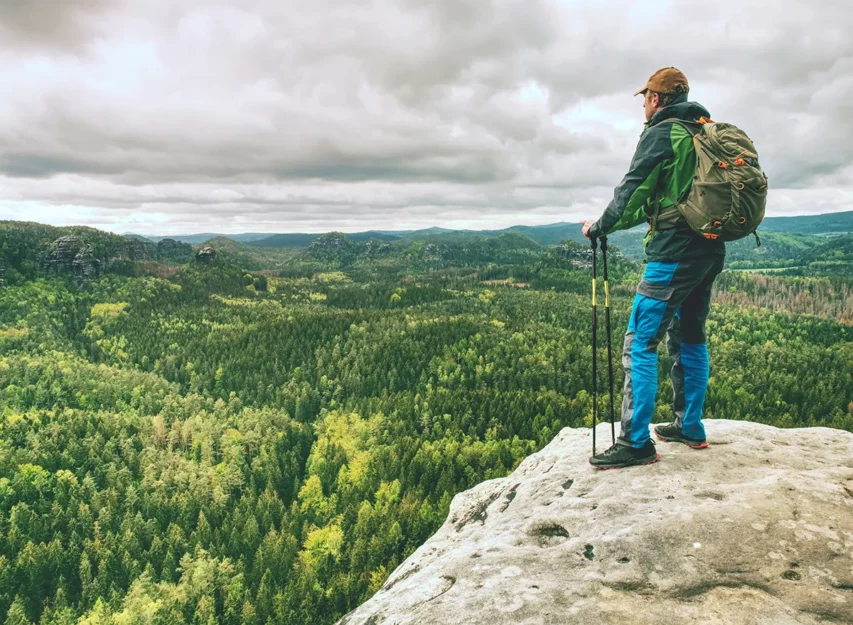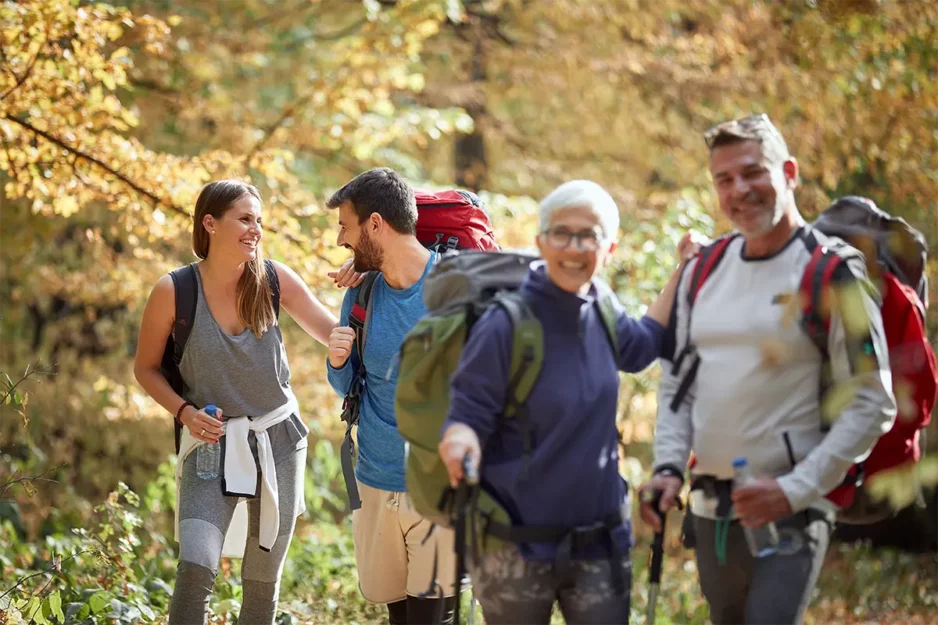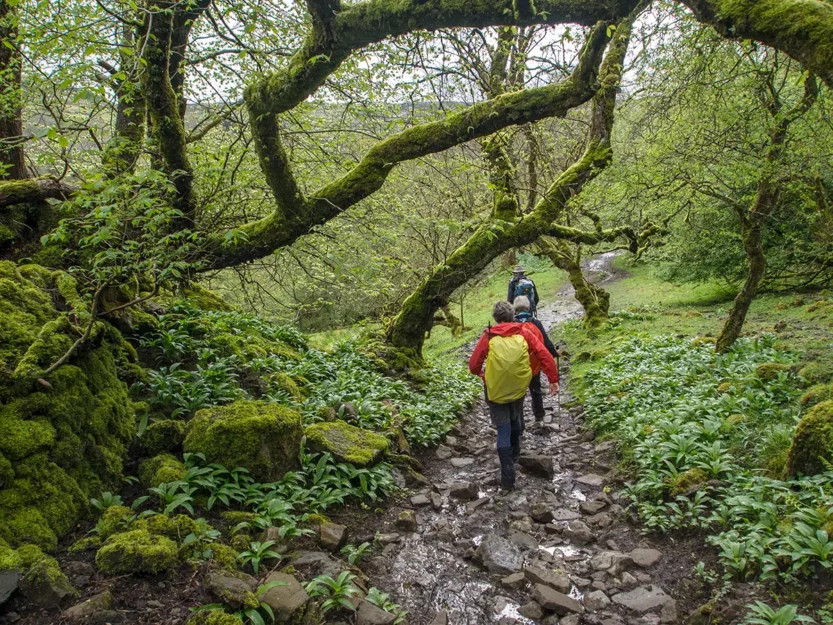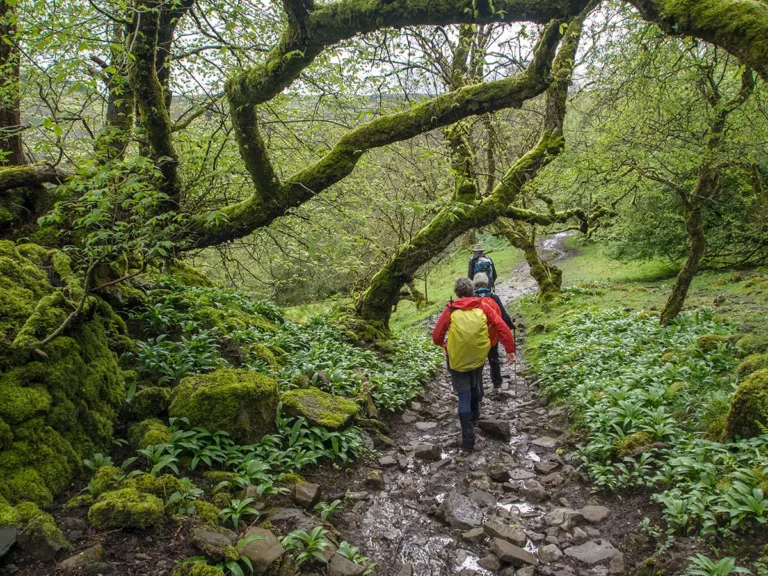If you’ve ever golfed, you’re familiar with the following day’s shock of soreness in the most unusual places. Hiking is another one of those activities, but mostly reserved for the legs, buttocks, and lower back.
So, why is hiking such a complete lower body workout? You take roughly 2,250 steps for each mile walked. When hiking, every mile of uneven rocky terrain causes you to sidestep and stair-step while stressing the muscles to ascend and descend steep trails.
Hiking forces our leg and core muscles to work in unique ways that can’t be emulated in the gym or anywhere else.
This article details what the body goes through on a trail to explain why hiking is an incredible lower body workout.
Why is hiking such a complete lower body workout?
Hiking is more than just a walk in nature. In fact, the thigh muscles work 60 to 80 percent harder when walking on an uneven surface, according to a study by the Journal of Experimental Biology.
The same study showed navigating rough terrain forces the hip to use 75 percent more power in each step. And this experiment was performed on a treadmill with foam obstacles.
Once you add dirt to lessen your grip, hilly inclines, and varying sizes of rocks, you can imagine the workout your legs get across thousands of rugged steps.

Which leg muscles does hiking work?
While winding through switchback trails and ascending and descending mountains, you test every muscle in your legs. As trail difficulty increases, so do the elevation changes and unevenness of terrains.
How challenging a trail you hike determines which muscle groups are most impacted.
Leg muscles worked hiking uphill
While climbing a steep trail, the muscles in the back of your leg are heavily relied upon. The hamstrings, glutes, and calves all work overtime to propel you forward while stabilizing against the gravity pulling you back.
Hamstrings are the primary muscles in the back of the thigh. This muscle group allows us to stand from a sitting position, propel forward, jump, squat, and run.
As elevation grade increases, calves work overtime to support and drive your weight up a hill. Powering yourself up an incline is similar to completing calf raises, one of the most effective resistance exercises for activating the calf muscles.
The glutes make up the buttocks’ muscle group and help support and stabilize the body at the hips while driving the body forward. The glutes are activated when hiking uphill, downhill, and on uneven terrain — essentially every step of a hike.
Leg muscles worked hiking downhill
After 2 hours, you just reached the summit of a grueling out-and-back trail. Luckily the way back is all downhill, and you can just coast, right?
That shorter 45-minute hike down the trail may feel like a relief, and it is for your heart and cardiovascular system, just not your muscles.
Slowing and stopping your body while descending puts immense strain on the muscles, especially in the quadriceps, which are a hip flexor and knee extensor.
The quadriceps are the muscle group that forms the front and outside of the thigh. These leg groups are worked when performing squats, leg presses, lunges, and step-ups.
Leg muscles worked navigating rugged trails
The hip abductor muscles open the hip allowing you to sidestep rocks while zig-zagging rugged trails. The primary hip abductor muscles include the following:
- Gluteus medius
- Gluteus minimus
- Tensor fascia latae
Secondary hip abductor muscles are the:
- Gluteus maximus
- Iliotibial band
Lower back use on hikes
If the legs are the powerhouse and the gluteus maximus the support for hips and legs, the lower back is the anchor for your entire body. And fighting gravity on hills, especially while carrying a backpack, puts your core muscles to the test.
Hiking up and downhill changes the spine’s range of motion and positioning drastically, forcing the supportive lower back muscles to work harder.
The core and lower back are worked when performing planks, hyperextensions, supermans, and good mornings.
Final thoughts
Thanks to rough terrain and elevation changes, hiking is an incredible complete lower body workout. But mental and cardiovascular health may be your best benefit.
In fact, for each 10% in elevation grade, a 150-pound person doubles their caloric burn. The increased heart rate strengthens the heart and lungs while increasing blood flow and oxygen in your body.
Furthermore, nature positively impacts your mind and mental health. Studies by the American Psychological Association have shown nature to decrease:
- Depression
- Stress
- Anxiety
While hiking improves:
- Memory
- Cognitive flexibility
- Attentional control
- Well-being
With all this new information, go find an easy 3-mile hike with moderate elevation changes and enjoy nature. Your legs might hate you in the morning, but your body and mind will thank you in the long run.
Did this article help to answer why hiking is such a complete lower body workout? Share this article on social media to help others learn the incredible benefits of hiking for exercise.








